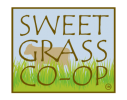Hay Piles and Happy Cows at San Juan Ranch
“We want to provide food that was raised with ‘kindliness and gentleness’ towards the animals, plants, soil, waterways, air shed, and to our communities.”
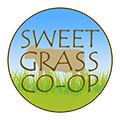
By Sam Schmidt
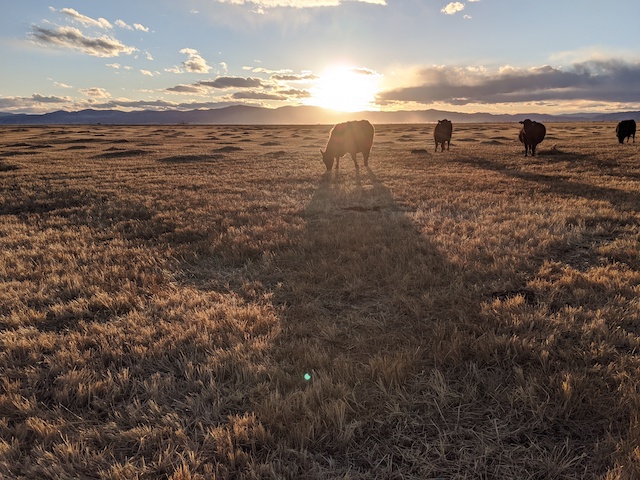
“We want to provide food that was raised with ‘kindliness and gentleness’ towards the animals, plants, soil, waterways, air shed, and to our communities.” – George Whitten
If you were to look out of the panoramic windows of the ranch house at the San Juan Ranch in Saguache, Colorado on any given day between September and April, you would see something that might strike you as curious. In the foreground, backed by the snow-capped Sangre de Cristo mountains and the Great Sand Dunes to the southeast, are the hay meadows that provide San Juan Ranch’s herds with winter feed. Unlike the typical hay field, with its clean-cut expanse of grass and hay bales stacked neatly to one side, these meadows are scattered with peculiar mounds roughly a foot high and a couple yards long, with no hay bales in sight.
If you happened to be looking out toward the meadows early in the morning, the mystery of the mounds would be revealed. You’d see a rancher, fence posts and electric fence reel in hand, bump the waist-high electric wire in order to expose a few rows of these piles, with cattle moving in behind to congregate around the piles. You’d see cows with heads buried in the scrum, periodically raising their heads up above the fray to chew and swallow a particularly large bright green mouthful.

If you haven’t yet guessed, these mounds are the grasses and forbs (non-grass plants) grown in these meadows, cut at the peak of their growth and nutritional value in August, formed into windrows, raked into piles, and then left in the field until they’re eaten, digested, and deposited right back onto the soil to nourish the next year’s crop. In this way, the nutrients in these fields cycle through plants and animals and continuously nourish the complex ecosystem, above and below ground, that allows for delicious grass-fed beef from season to season, and year to year, without any fertilizer or other additives. Furthermore, this approach minimizes reliance on machinery and diesel; all that’s needed to feed the cattle are a pair of arms and legs.
You might be scratching your head, wondering skeptically: “Wait, aren’t cows bad for the environment?” Unless you’re living under a rock, you’ve probably seen something about how livestock, particularly cattle, are major global contributors to climate change, water scarcity and pollution, biodiversity loss, deforestation, and other environmental problems. While there is certainly truth to this, broad assertions about global food production focus so much on the forest that they miss the trees. Sweetgrass Coop members are testament to the fact that raising livestock doesn’t have to be at the expense of the health of our planet; in fact, it can be an effective tool to regenerate the land that sustains not only human life, but all life.
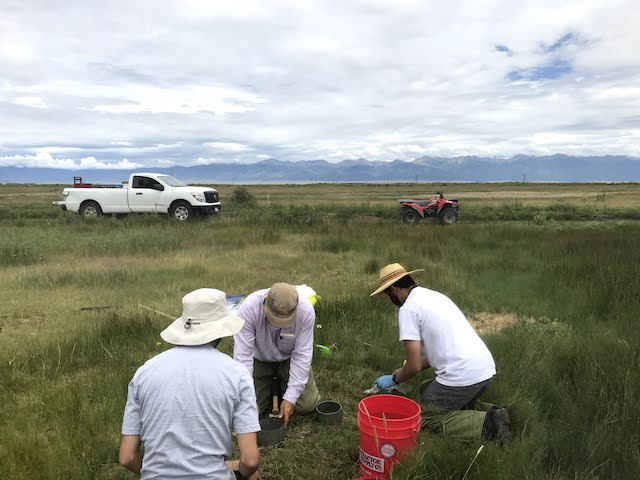
San Juan Ranch’s hay piles are just one example of the ecological focus that is a foundational value to our coop. We see ourselves first and foremost as stewards of the land that sustains our families, our animals, and our communities, rather than exclusively as beef producers.. The beef is just a happy byproduct of healthy landscapes and ecosystems. This is why Sweet Grass Coop is working closely with the Audubon Society to monitor bird populations and habitats on our member ranches and create management strategies that take into account the needs of entire ecosystems, not just our cattle. We also collaborate closely with local soil scientists to manage the health of our landscapes below ground. Through our focus on soil health, we can pull more carbon out of the air and store it safely in the ground, hold more water and reduce runoff and nutrient leaching, and improve general environmental resilience all while fostering healthy cows and delicious beef. As George Whitten, one of our founding members, sums it up: “We want to provide food that was raised with ‘kindliness and gentleness’ towards the animals, plants, soil, waterways, air shed, and to our communities.”
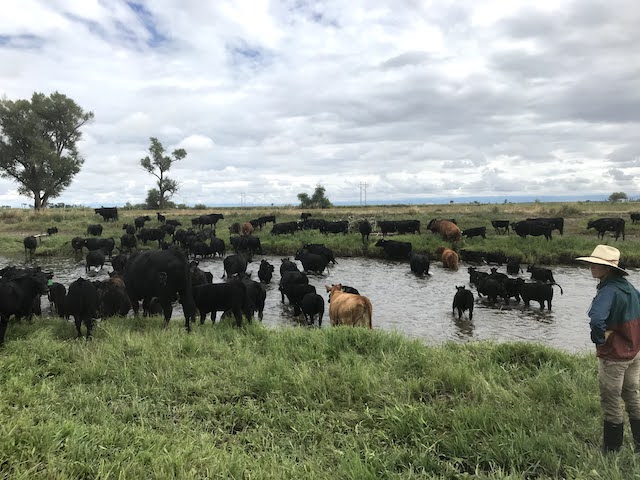
If you happened to still be watching the herd, you’d see the initial excitement about breakfast slide into contentment as the cows filled their bellies, took a drink of water, and laid down to contentedly chew their cud and maybe lounge in the warm winter sun. You’d also hopefully come to understand what George was talking about and what the core of Sweet Grass is. These are happy animals, the product of the care given to them by the rancher and the ecosystem they are a part of. Just as importantly, they are the means by which that rancher can care for his or her ecosystem. By returning nutrients to the soil, those cows nourish the plants, animals, and microbes that in turn nourish them, and ultimately, in the form of beef, nourish their human community as well.

